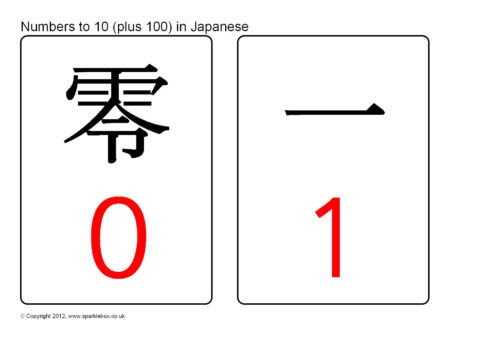Best Mandarin Chinese textbook for self-study? I can only afford to buy one textbook right now, but I'm not sure which one. I've heard of Integrated Chinese and The New Practical Chinese Reader, but I'm not sure how effective these are or if there are better options out there.
Publisher:- Chinese in general rely on body movements, facial expression, eye messages, and other nonverbal signals. Chinese are less direct or forward when communicating with others. Issues arise when interpreting nonverbal expressions, which can be difficult. Smiling in the Chinese, culture unlike American, normally signifies shyness or embarrassment.
- Online textbook files. CONTENTS FILES; Background. Chinese speech 3. Chinese writing 4. Further readings and references. Chapter: Sounds and symbols: An overview of pinyin.
ISBN: 9780804851244
Size: 57.30 MB
Format:
 PDF, ePub, Mobi
PDF, ePub, MobiMandarin Chinese Textbook Pdf Template
View: 3453
Get Books
Elementary Mandarin Chinese Textbook is a new beginner Mandarin Chinese course which enables you to quickly learn the basics of the language. The 24 lessons in this book are meant to be used in 3 hours per week of class instruction over one academic year. Students will need another 2-3 hours of outside practice and review for every hour of class time, using the materials in the accompanying Elementary Mandarin Chinese Workbook. These books can also be used by self-study learners due to the extensive explanations and free supplementary materials available -- including online audio and video recordings and flash cards. The entire course can be completed in 25 to 35 weeks and teaches you the basic skills of listening, speaking, reading and writing Mandarin Chinese at a conversational level. Each lesson starts with a dialogue and includes a list of new and supplementary Chinese vocabulary along with questions and grammar notes about the dialogue, a reading section and extensive exercises (that are in the Workbook). Elementary Mandarin Chinese Textbook offers the following significant advantages over other similar textbooks: Common, everyday Chinese dialogues are used for listening and practice -- complete with vocabulary lists and questions and storylines based on actual everyday experiences in China Chinese grammar is explained in simple, non-technical terms with useful notes and tips given Reading exercises are provided for all new words and phrases in each lesson Free online audio recordings by native speakers from various parts of China help you not only acquire correct pronunciation but also to understand Chinese speakers who have different accents Illustrations and supplementary video clips add authenticity to the dialogues in the book A Chinese-English dictionary is provided at the back for easy reference Chinese characters and Pinyin Romanized forms are used throughout the book (except for the reading exercises), so this book is usable by learners who wish to focus on learning the spoken language who do not necessarily want to learn to read and write Chinese simultaneously. This textbook should be used in conjunction with Elementary Mandarin Chinese Workbook and the included audio files, which can be downloaded free directly from the Tuttle website.
Mandarin Chinese Textbook Pdf Textbook

Each section and recording in Part I is available as an individual file, as well as a single download. Additional audio and other supplemental files are available with purchase of this textbook.
Complete Part I text and audio (ZIP)
| CONTENTS | FILES |
|---|---|
Background 1. China | Chapter (PDF) |
Sounds and symbols: An overview of pinyin 1. The syllable | Chapter (PDF) 0.2.3 The low-tone (MP3) 0.3.1 The consonant chart (MP3) |
Unit 1 1.1 Conventions | Chapter (PDF) 1.10.1 Tone combos (the first 6) (MP3) Exercise 3c (MP3) Exercise 3d,e (MP3) |
Characters 1 1.1 General features of Chinese texts | Lesson (PDF) Stroke Order (PDF) |
Unit 2 2.1 Pronunciation | Chapter (PDF) 2.4 Nouns and modification (MP3) 2.7.1 Some Chinese place names (MP3) 2.9 At the airport (MP3) 2.11.3 Tone combos (the next 6) (MP3) |
Characters 2 2.0 Review | Lesson (PDF) Stroke Order (PDF) |
Unit 3 3.1 Pronunciation: Initials of rows 3 and 4 | Chapter (PDF) 3.4.1 Dialogues (MP3) 3.7.1 Dialogue (MP3) 3.12 Courses and classes (MP3) 3.13.1 Tone combos (the last 3) (MP3) |
Characters 3 3.0 Review | Lesson (PDF) Stroke Order (PDF) |
Unit 4 4.1 Tone contrasts | Chapter (PDF) 4.2.1 Places (MP3) 4.10 On the bus to Miányáng (MP3) 4.11.1 Two short narratives (MP3) |
Welcome!
This OCW supplemental resource provides material from outside the official MIT curriculum.
MIT OpenCourseWare is a free & open publication of material from thousands of MIT courses, covering the entire MIT curriculum.
Best Chinese Mandarin Textbooks
No enrollment or registration. Freely browse and use OCW materials at your own pace. There's no signup, and no start or end dates.
Knowledge is your reward. Use OCW to guide your own life-long learning, or to teach others. We don't offer credit or certification for using OCW.

Made for sharing. Download files for later. Send to friends and colleagues. Modify, remix, and reuse (just remember to cite OCW as the source.)
Learn more at Get Started with MIT OpenCourseWare
